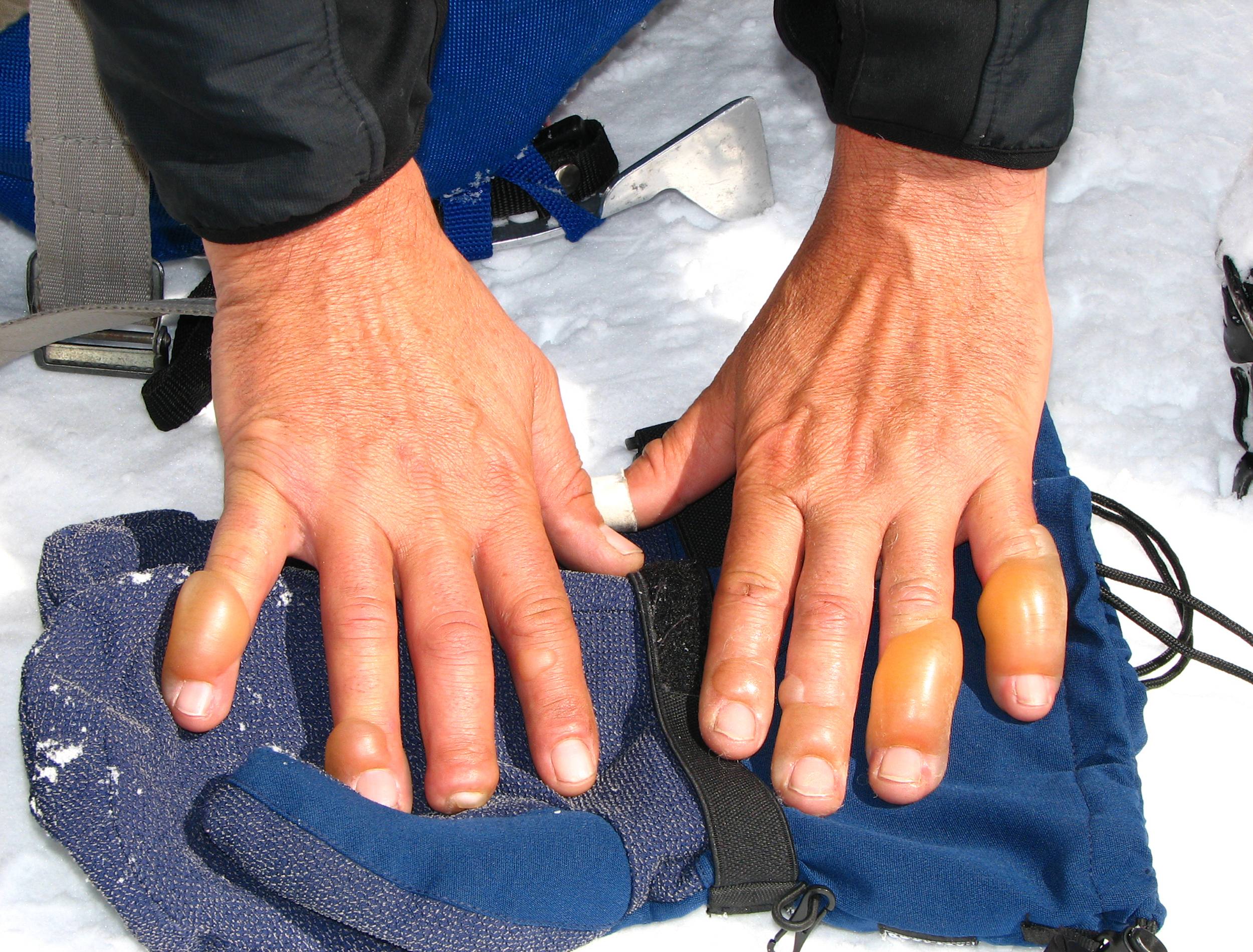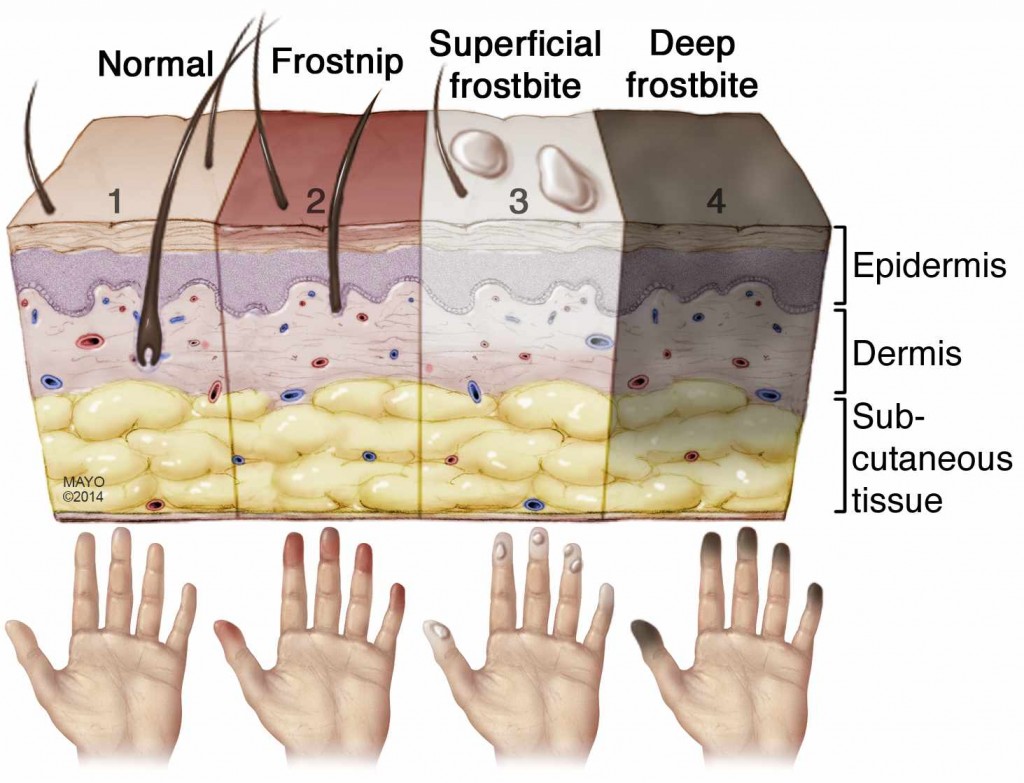-
Featured News
Arctic grip brings frostbite fears and other weather-related worries

Much of the U.S. is facing severe winter storms and subzero temperatures. And one of the first concerns, if you're outdoors, should be frostbite.
Frostbite is an injury caused by freezing of the skin and underlying tissues. First your skin becomes very cold and red, then numb, hard and pale. Frostbite is most common on the fingers, toes, nose, ears, cheeks and chin. Exposed skin in cold, windy weather is most vulnerable to frostbite. But frostbite can occur on skin covered by gloves or other clothing.

Signs and symptoms of frostbite include:
- At first, cold skin and a prickling feeling
- Numbness
- Red, white, bluish-white or grayish-yellow skin
- Hard or waxy-looking skin
- Clumsiness due to joint and muscle stiffness
- Blistering after rewarming, in severe cases
But frostbite isn't the only danger in the bitter cold. There are other serious health conditions to be worried about in frigid temperatures. Dr. David Nestler, a Mayo Clinic emergency medicine specialist, says hospital emergency departments see an influx of weather-related injuries with each snowstorm. He reminds the public about the dangers of frostbite and other health problems and hesay falls are amonght eh most common emergencies. "The snow and ice make it easy to slip and fall," says Dr. Nestler. "We see many, many broken bones because of that." Weather-related vehicle accidents, heart attacks triggered while shoveling snow and exposure injuries, such as frostbite, also send more people to emergency rooms.
Watch: Dr. Nestler discusses the danger of cold weather.
Journalists: Broadcast-quality sound bites with Dr. Nestler are in the downloads.
Click on the links below to see previous winter weather-related Mayo Clinic News Network posts:
- Fearful of Frostbite?
- Winter's Severe Cold Snap Calls for Extra Dose of Caution
- Slipping, Sliding and Snow Shoveling Season
- Winter Health: Common Sense Decisions and Smart Preparations
- Saving Lives with Gus: Don’t get frostbite!!
- Saving Lives with Gus: Carbon Monoxide Safety Season
- Caution about carbon monoxide
Here are some tips from Mayo Clinic Health System physicians for injury-free snow shoveling:
- If you're inactive and have a history of heart trouble, talk to your doctor — stop if you feel tightness in your chest. Heart attacks increase significantly in the winter months, particularly while people are shoveling snow.
- Drink plenty of water. Dehydration is just as possible when you exert yourself in cold winter months as it is in the summer.
- Dress warmly. Dress in several layers so you can remove a layer as needed.
- Do not shovel while eating or smoking. Avoid caffeine or nicotine before you begin shoveling. This may place extra stress on the heart.
- Warm up your muscles in your arms and legs. Walk for a few minutes and stretch your arms and legs before shoveling. Warm muscles are less likely to be injured and work more efficiently.
- Take it slow! Pace yourself and take breaks. Keep a cell phone handy in case of emergency.
- Don’t pick up too much snow at once. Use a small shovel, or fill it only 25 to 50 percent if you use a large shovel. If necessary, just push the snow as you shovel. It is easier on your back. Keep the load of snow as close to you as possible.
- Protect your back. Bend from the knees, not your back. Lift with your legs bent, stand with your feet about hip width for balance and keep the shovel close to your body. Try not to twist. If you move the snow to one side, move your feet to face the direction the snow will be going.
- Clear snow as soon as it stops falling. Freshly fallen snow is lighter.
- Most importantly — listen to your body! Stop if you feel tired.
Watch: Saving Lives With Gus - Don't get frostbite!
Journalists: Broadcast-quality "Saving Lives With Gus" video pkg is in the downloads.







